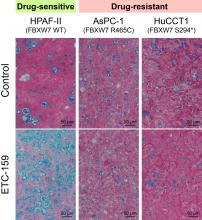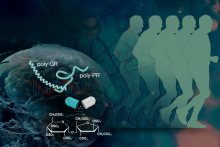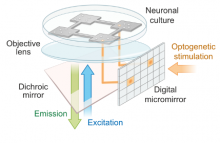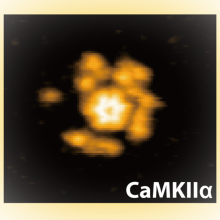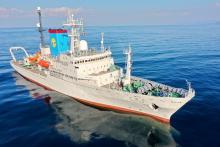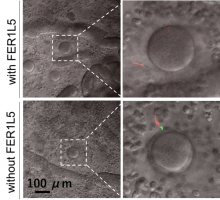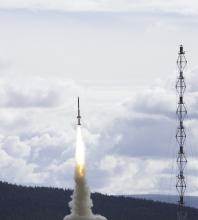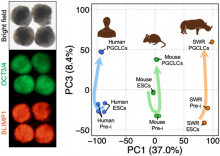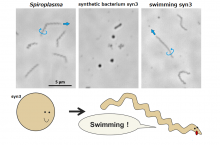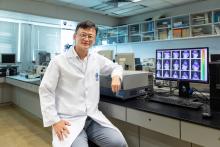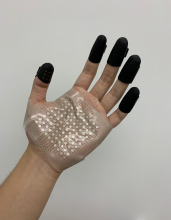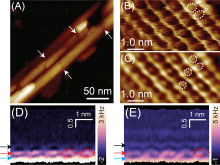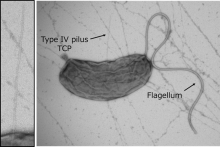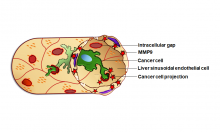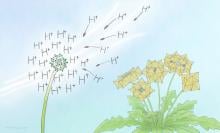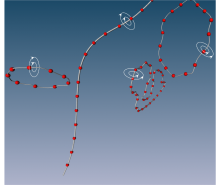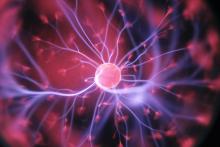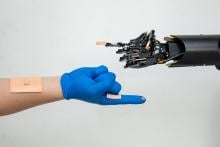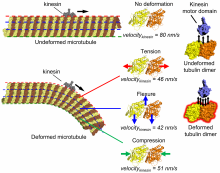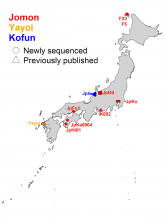Science Advances
News
18 Mar 2024
Amyotrophic Lateral Sclerosis (ALS) and Frontotemporal Dementia (FTD) are neurodegenerative diseases that commonly occur in middle-aged people. FTD is second only to Alzheimer's disease in terms of dementia prevalence. Both ALS and FTD arise from neuronal degeneration through mechanisms that remain unclear. Dr. Yun-Ru (Ruby) Chen's team in the Genomics Research Center (GRC), Academia Sinica recently discovered a new pathological mechanism for neuronal degeneration using synthetic peptides. They also discovered that a disaccharide can increase neuronal survival and reduce degeneration. The result provides therapeutic strategies for future treatment of these neurodegenerative diseases. The study was published in the top international journal "Science Advances" on February 23, 2024.
11 Dec 2023
Asteroids offer valuable windows into the early solar system, given that they are remnants of planetary embryos that failed to form into planets. A recent analysis of samples from Ryugu offered insights into the composition of water- and carbon-rich small bodies in the solar system.
29 Nov 2023
Researchers at Kanazawa University report in Science Advances how they can accelerate and decelerate chirality inversion in large cage molecules using alkali metal ion binding.

12 Oct 2023
Chemotherapy for cancer treatment often results in collateral damage to healthy cells and other adverse effects. A research team led by City University of Hong Kong (CityU) recently developed “sono-sensitised chemotherapy” (SSCT), a new form of ultrasound-activated chemotherapy, which further enhances the precision for eradicating deeper tumours with centimetre range of tissue penetration and minimises side effects.
20 Sep 2023
Scientists have revealed that the outer part of our brain (the cortex) is skilled at managing all the info it gets from the outside world thanks to special groups of nerve connections called modules, which work together but also independently.
28 Jul 2023
Scientists have isolated potent neutralising antibodies from a COVID-19 vaccinated SARS survivor that exhibited remarkable breadth against known sarbecoviruses. The antibodies targeted a conserved region of the spike protein and blocked receptor binding and viral fusion. These findings could guide the development of broadly active therapeutics against current and future coronaviruses.
05 Jul 2023
Researchers at Kanazawa University report in Science Advances high-speed atomic force microscopy experiments that show the structural and chemical changes in an enzyme thought to play a vital role in modulating the strength of neural connections.
24 Mar 2023
Hailey-Hailey disease is a rare, inherited condition characterized by patches of blisters appearing mainly in the skin folds of the arm pits, groin and under the breasts. It is caused by a mutation in the gene that codes for a specific protein. Tohoku University scientists have uncovered some critical details of this protein’s structure, and the findings could build the foundation for developing treatment for Hailey-Hailey disease and other neurodegenerative conditions.
10 Feb 2023
Hydrothermal vents have been identified as a previously undiscovered source of dissolved black carbon in the oceans, furthering the understanding of the role of oceans as a carbon sink.
25 Jan 2023
Researchers from Osaka University have identified a protein, FER1L5, that is essential for sperm to acquire fertilizing ability. Sperm from mice lacking this protein were unable to undergo the “acrosome reaction”, which releases molecules that facilitate fertilization, resulting in impaired male fertility. As FER1L5 is also present in human sperm, this work may lead to new diagnostic methods and treatments for male infertility in humans.
13 Jan 2023
Understanding how dust grains form in interstellar gas could offer significant insights to astronomers and help materials scientists develop useful nanoparticles.
19 Dec 2022
Researchers from Osaka University have developed a culture system using pluripotent cells from southern and northern white rhinos, which was refined to produce primordial germ cell-like cells (PGCLCs). These cells are the equivalent of primordial germ cells, the origin of eggs and sperm. The study marks an important first step in the potential production of northern white rhino gametes, which could be used in breeding programs, and is the first to induce PGCLCs in a wild animal.
30 Nov 2022
Osaka Metropolitan University researchers introduced seven proteins, thought to let bacteria swim by switching the direction that their helical bodies spiral, into a strain of synthetic bacterium with minimal genetic information. As a result, they confirmed that the synthetic bacterium named syn3, which is normally spherical, formed a helix that could swim by spiraling. Further investigation revealed that only two of these newly added proteins were required to make syn3 capable of minimal swimming. This swimming synthetic bacterium can be said to be the smallest mobile lifeform genetically, as it contains the fewest number of genes.
28 Nov 2022
A Hong Kong Baptist University (HKBU) collaborative research team has synthesised a nanoparticle named TRZD that can perform the dual function of diagnosing and treating glioma in the brain. It emits persistent luminescence for the diagnostic imaging of glioma tissues in vivo and inhibits the growth of tumour cells by aiding the targeted delivery of chemotherapy drugs. The nanoparticle offers hope for the early diagnosis and treatment of glioma, especially cerebellar glioma, which is even harder to detect and cure with existing methods.

15 Nov 2022
A multinational team of researchers, co-led by a City University of Hong Kong (CityU) physicist, has found that a novel metallic crystal displays unusual electronic behaviour on its surface, thanks to the crystal’s unique atomic structure. Their findings open up the possibility of using this material to develop faster and smaller microelectronic devices.
15 Nov 2022
A collaborative research team co-led by City University of Hong Kong (CityU) has developed a wearable tactile rendering system, which can mimic the sensation of touch with high spatial resolution and a rapid response rate. The team demonstrated its application potential in a braille display, adding the sense of touch in the metaverse for functions such as virtual reality shopping and gaming, and potentially facilitating the work of astronauts, deep-sea divers and others who need to wear thick gloves.
26 Oct 2022
Researchers from Osaka University have demonstrated a proof-of-concept for a novel molecular hydrogen production method that bypasses the need for expensive purification steps. They developed a system where hydrogen is separated and stored in liquid organic hydrogen carriers by catalysis of triaryl boranes in one seamless process. The results of this work will help facilitate the transition to a hydrogen-based economy that is necessary for a more sustainable future.
19 Oct 2022
Scientists have uncovered new details of how ice forming below the ocean surface in Antarctica provides cold dense water that sinks to the seabed in an important aspect of global water circulation.
17 Oct 2022
Chemists in Japan, Canada and Europe have uncovered flaws in the surface structure of cellulose nanocrystals—an important step toward deconstructing cellulose to produce renewable nano-materials relevant to biochemical products, energy solutions, and biofuels.
14 Oct 2022
Researchers from Osaka University have found that the Vibrio cholerae colonization factor TcpF forms a flower-shaped trimer to specifically bind to the minor pilus protein TcpB resulting in secretion by the type 4 pilus secretion system into the extracellular space. This finding could help lead to the development of a novel anti-adhesive drug that selectively interrupts the TcpF-TcpB interaction, which may replace antibiotics in the treatment of cholera.

11 Oct 2022
Vaccines have become the most important weapon in the fight against the COVID-19 pandemic, but antibody levels after vaccination decay quickly over time. Therefore, an accurate and affordable antibody rapid test is urgently needed to adjust the revaccination strategy. A research team led by City University of Hong Kong (CityU) recently invented an accurate rapid-testing device that can quantify and display the antibody level as a length of a visual bar, like a mercury thermometer, in as few as 20 minutes, enabling convenient mass screening or individual monitoring of immune protection against COVID-19.
04 Oct 2022
Metastasis—when cancer spreads to form new tumors—causes approximately 90% of cancer-related deaths. Because metastatic cancer cells circulate in the blood, the liver—which filters the blood—is considered the most vulnerable organ, so treatments that prevent liver metastasis are urgently needed. A team of Osaka Metropolitan University researchers discovered a mechanism that allows metastatic cancer cells to infiltrate the liver, and how that infiltration can be blocked by inhibiting a related protein.
18 Jun 2022
The molecule is unusual and has ‘great potential’ in catalysis, conduction and other applications.
12 May 2022
Researchers at Osaka Metropolitan University and Osaka University used numerical simulations to confirm observations of quantized vortices in superfluid helium using silicon nanoparticles, improving understanding of quantum fluids and superconductors.
27 Apr 2022
Hokkaido University researchers have shown how chronic pain leads to maladaptive anxiety in mice, with implications for treatment of chronic pain-related psychiatric disorders in humans.
26 Apr 2022
Researchers set out to find new ways to artificially induce mRNA to respond in ways that could eventually lead to therapeutic outcomes, expanding on the success of the mRNA-based COVID-19 vaccines and opening up new possibilities across a host of possible genetic therapies.
23 Feb 2022
The coronavirus pandemic has accelerated the use of robots and an urgent need for an advanced human-machine interface (HMI) system that can seamlessly connect users and robots. A research team co-led by City University of Hong Kong (CityU) and collaborating institution recently developed an innovative HMI system, which consists of flexible, multi-layered electronic skin and provides both visual and haptic feedback to users. The system can teleoperate the robot to imitate the user's actions to perform complicated tasks. It demonstrates the potential for conducting Covid-19 swab tests and nursing patients with infectious diseases.
13 Oct 2021
Direct evidence that microtubules function as mechano-sensors and regulate the intracellular transport of molecules has been reported, leading to new possibilities in the fields of biomechanics, medicine, and biosensors.
11 Oct 2021
A long-standing hypothesis, the dual-structure model, posits that Japanese populations derive dual ancestry from indigenous Jomon hunter-gatherer-fishers and succeeding Yayoi farmers. We conduct paleogenomic analyses of people of the Jomon, Yayoi, and Kofun periods from Japanese archaeological sites. We identify a later influx of East Asian ancestry in the Kofun period and clarify that the genome of the modern Japanese population is composed of three ancestral components, proposing a tripartite model of Japanese origins.
Events
Sorry, no events coming up for this topic.
Researchers
Sorry, no researchers coming up for this topic.
Giants in history
Sorry, no researchers coming up for this topic.


